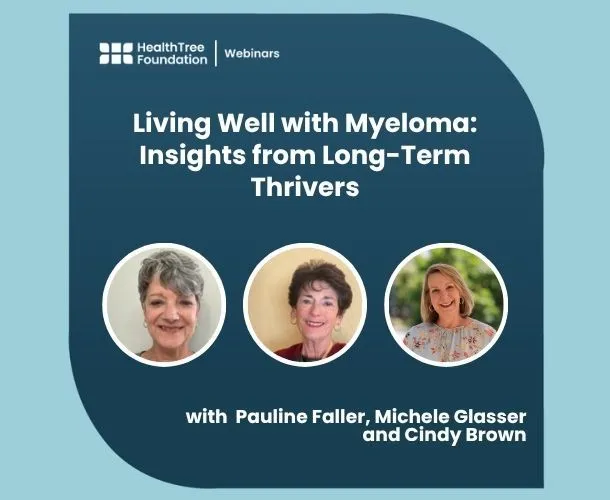Treating Primary Plasma Cell Leukemia

A recent editorial in the journal Haematologica (“Plasma cell Leukemia: another piece of the puzzle”) makes for an interesting read for the few of us with the primary plasma cell leukemia (pPCL) variant of multiple myeloma. This study sorts through several (mostly retrospective) studies on what works best for newly/recently diagnosed pPCL patients and makes several recommendations.
I will skip sorting out all the different studies as their outcomes are well documented in the above-mentioned article and will go right to the observations and recommendations.
- At this point in time, transplant is still the way to go in treating pPCL (but we will come back to this point later).
- “Double auto-[stem cell transplant] represented an effective option for patients achieving complete remission prior to their first transplant.” [Emphasis added]
- “On the other hand, tandem auto/allo-SCT reduced the short-term risk of non-relapse mortality following first-line single allo-SCT and showed a significant overall survival benefit when compared to single auto-SCT and double auto-SCT in patients WITHOUT a complete response prior to the transplant.” [Emphasis added]
- “ … the results achieved with transplant strategies may depend upon the efficacy of induction treatment. As a consequence, highly active initial therapies should be pursued before proceeding with transplant procedures. … First-line therapy for younger, transplant-eligible pPCL patients, should be oriented toward a short (2-3 cycles) induction phase with proteasome inhibitor and immunomodulatory drug-based triplet, considering the addition of chemotherapy (i.e., hyper fractionated cyclophosphamide, vincristine, doxorubicin, and prednisolone [hyper-CVAD] or cisplatin, doxorubicin, cyclophosphamide, and etoposide [PACE]) if rapid cytoreduction is required. The treatment should include double auto-SCT, consolidation, and maintenance therapy.” [Emphasis added]
- Unfortunately, the article makes no mention of what course of action to take in transplant-ineligible patients.
- It seems that about 20-25 % of patients treated for pPCL with this approach make it to 5+ years of overall survival.
A few weeks ago HealthTree for Myeloma posted outcomes for a recent study that was based on the triplet Kyprolis-Revlimid-dexamethasone to treat newly diagnosed pPCL.
This study also changed the treatment protocol based on the age of the patient (young = 65 years or less, old > 65 years) as well as the transplant route to take based on whether the patient achieved “Complete Remission” (CR) following the induction phase.
The current article also makes the point that treatment paradigms for pPCL may change with the advent of monoclonal antibodies (such as Darzalex), bi-specific antibodies and CAR-T options, and potentially Venetoclax (as 30-50 % of pPCL patients show a presence of the risk factor t(11,14)) but also bemoans the situation that is all too familiar for us, pPCL patients.
Pharma does not like to invest in our small patient population (especially a population with historically poor outcomes).
A few years ago, the International Myeloma Working Group lowered the threshold of “percent plasma cells in circulating plasma” to be identified as a pPCL patient from 20% to 5%. This ought to increase the pPCL patient population which may give the pharmaceutical industry some incentive to start investing in us.
A recent editorial in the journal Haematologica (“Plasma cell Leukemia: another piece of the puzzle”) makes for an interesting read for the few of us with the primary plasma cell leukemia (pPCL) variant of multiple myeloma. This study sorts through several (mostly retrospective) studies on what works best for newly/recently diagnosed pPCL patients and makes several recommendations.
I will skip sorting out all the different studies as their outcomes are well documented in the above-mentioned article and will go right to the observations and recommendations.
- At this point in time, transplant is still the way to go in treating pPCL (but we will come back to this point later).
- “Double auto-[stem cell transplant] represented an effective option for patients achieving complete remission prior to their first transplant.” [Emphasis added]
- “On the other hand, tandem auto/allo-SCT reduced the short-term risk of non-relapse mortality following first-line single allo-SCT and showed a significant overall survival benefit when compared to single auto-SCT and double auto-SCT in patients WITHOUT a complete response prior to the transplant.” [Emphasis added]
- “ … the results achieved with transplant strategies may depend upon the efficacy of induction treatment. As a consequence, highly active initial therapies should be pursued before proceeding with transplant procedures. … First-line therapy for younger, transplant-eligible pPCL patients, should be oriented toward a short (2-3 cycles) induction phase with proteasome inhibitor and immunomodulatory drug-based triplet, considering the addition of chemotherapy (i.e., hyper fractionated cyclophosphamide, vincristine, doxorubicin, and prednisolone [hyper-CVAD] or cisplatin, doxorubicin, cyclophosphamide, and etoposide [PACE]) if rapid cytoreduction is required. The treatment should include double auto-SCT, consolidation, and maintenance therapy.” [Emphasis added]
- Unfortunately, the article makes no mention of what course of action to take in transplant-ineligible patients.
- It seems that about 20-25 % of patients treated for pPCL with this approach make it to 5+ years of overall survival.
A few weeks ago HealthTree for Myeloma posted outcomes for a recent study that was based on the triplet Kyprolis-Revlimid-dexamethasone to treat newly diagnosed pPCL.
This study also changed the treatment protocol based on the age of the patient (young = 65 years or less, old > 65 years) as well as the transplant route to take based on whether the patient achieved “Complete Remission” (CR) following the induction phase.
The current article also makes the point that treatment paradigms for pPCL may change with the advent of monoclonal antibodies (such as Darzalex), bi-specific antibodies and CAR-T options, and potentially Venetoclax (as 30-50 % of pPCL patients show a presence of the risk factor t(11,14)) but also bemoans the situation that is all too familiar for us, pPCL patients.
Pharma does not like to invest in our small patient population (especially a population with historically poor outcomes).
A few years ago, the International Myeloma Working Group lowered the threshold of “percent plasma cells in circulating plasma” to be identified as a pPCL patient from 20% to 5%. This ought to increase the pPCL patient population which may give the pharmaceutical industry some incentive to start investing in us.

about the author
Paul Kleutghen
I am a patient diagnosed in 2014 with primary plasma cell leukemia (pPCL), a rare and aggressive variant of multiple myeloma and have been very fortunate to find successful treatment at the division of Cellular Therapy at the Duke University Cancer Institute. My wife, Vicki, and I have two adult children and two grandsons who are the ‘lights of our lives’. Successful treatment has allowed Vicki and I to do what we love best : traveling the world, albeit it with some extra precautions to keep infections away. My career in the pharmaceutical industry has given me insights that I am currently putting to use as an advocate to lower drug pricing, especially prices for anti-cancer drugs. I am a firm believer that staying mentally active, physically fit, compliant to our treatment regimen and taking an active interest in our disease are keys to successful treatment outcomes.
More on Treatment Advances
Trending Articles




Get the Latest Multiple Myeloma Updates, Delivered to You.
By subscribing to the HealthTree newsletter, you'll receive the latest research, treatment updates, and expert insights to help you navigate your health.
Together we care.
Together we cure.
3x Faster.












